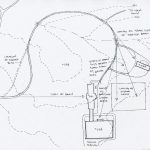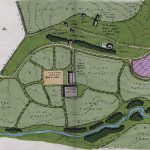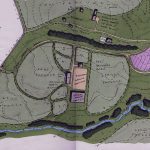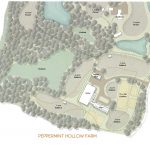After reading Stable Management’s recent article “Environment is Important in Planning Your Equine Facility,” I thought the topic would be perfect for this latest series of Barn Design Tips and Thoughts. You can find Stable Management’s article here (http://stablemanagement.com/article-archive/stable-management/environment-is-important-in-planning-your-equine-facility/) if you are interested.
The article is absolutely correct, “Environment is important.” Since you cannot change the environment, selecting the proper property and layout of your farm is critical to its success. The farm has to respect the land and environment in which it is placed. Sometimes people attempt to change the land to suit the farm they desire. That process is generally extremely costly and some spend more money manipulating the land than they do building the structures, fencing, etc.
A successful horse farm needs to respect three concerns: the demands of the site, the goals of the owner, and the needs of the horse. At Blackburn, we believe the needs of the horse remain paramount throughout the planning and design process. For over 30 years and in more than 30 states, I have seen an incredible range of properties and locations on which a horse-owner wants to “build” a farm. Most properties can be adapted in some way, but at what expense? One time, I had a conversation with a thoroughbred owner in which he had to decide between spending $100k to solve a site issue his way or accepting a lower cost alternative that could save him enough money to invest in a new foal. Like many equestrians faced with a similar choice, he chose the latter. This is one of the reasons why having an equestrian architect or planner evaluate a site before purchase may be extremely helpful and cost-effective.
In order to make the most of your land and stable, planning is necessary. The most important and critical step is to develop a master plan. This is where most of our projects start. A proper master plan will analyze the site to determine the property’s unique features, pitfalls, proper conditions, seasonal changes, etc. etc.
There are literally thousands of things to consider and they are not all the same for any two projects. As I have described it in terms of farm managers, you can get a hundred farm managers in a room and you will get at least 101 different opinions on how to run or operate a farm. The same is true for the site. Oftentimes, we present several site plan options to clients so they can see the benefits and negatives of different building placements. It may require an experienced equine planner, designer/architect, or landscape designer/architect to see the differences or to see “the forest for the trees.” For that reason, it is almost impossible for me to give general tips about site planning as each site differs. One generally applicable tip is locating the long axis of the barn perpendicular to the prevailing summer breeze for good ventilation. The key is determining the direction of the prevailing summer breeze. I recommend starting with local airport wind data, but following that with a site analysis to observe site obstructions that can modify the pattern. Every site has it’s own microclimate and it is important to gain an understanding of it before you design the overall site plan.
To make the most of your property, I highly advise hiring someone with experience. Sometimes this is where people have issues. Without considering all the influences of land and environment, they purchase a prefab or select a design/build solution. With many of these companies, their sole interest is selling a product, not a service. It is not very different from selecting a trainer for your horse. If you want to be a top dressage rider, selecting a general all-around trainer can only get you so close to your goal. Instead, you need someone with experience in high-level dressage. Someone that is able to understand your horse, you, and your goals. Similarly, what the owner of a horse property needs is the service of an experienced hand, the talents of a trained eye, and the concern for the long term success of the farm.
A few weeks ago, I was approached by a potential client who had selected a prefab barn/arena structure. Throughout the process, the prime concern was the cost and speed of erection. The supplier offered to adjust the size of her building components to fit the building pad, but didn’t look any further. When the owner complained that the barn stuck out like a sore thumb, the prefab manufacturer added a series of small cupolas that were not functional and out of proportion. Unfortunately, in these situations it is often the health of the horses that suffer. They are the ones that miss out on the prevailing summer breezes that your pre-fab structure never gets because barn placement wasn’t considered. It is the horses that have to live in a stall that smells and contains high levels of ammonia gas, since draining and the importance of natural light in reducing gas production was not a priority. They do not have the benefit of clerestory light entering or the light from a Dutch door removing bacteria from the air, since your pre-fab barn may lack Dutch-doors and abundant sky-lights. Of course none of these are extreme life-threatening problems and not every pre-fab structure or kit of parts is horribly designed (although there are definitely some out there). Yet, when you take a horse out of its comfort zone- the wild- it’s your obligation to create an environment that protects its health and safety. A poorly designed barn can be worse than no barn at all.
The last line of the article stating “Environment is Important in Planning Your Equine Facility” is absolutely correct. “Understanding what you want to develop, and planning for the success of that horse facility, will go a long way in making the project go faster and easier,” and if I might add, cost less and be a better long-term investment.
If you are interested in how stable design can make a healthy environment for horses, please consider checking out my new book Healthy Stables by Design. After practicing as an equestrian architect and concerning myself with ways to make stables safer and healthier for their inhabitants in all kinds of environments, I thought it was finally time to share some of my principles. In my book, you can start to understand these concepts as I explain them through large-scale pictures and drawings.




